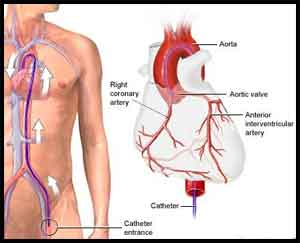- Home
- Editorial
- News
- Practice Guidelines
- Anesthesiology Guidelines
- Cancer Guidelines
- Cardiac Sciences Guidelines
- Critical Care Guidelines
- Dentistry Guidelines
- Dermatology Guidelines
- Diabetes and Endo Guidelines
- Diagnostics Guidelines
- ENT Guidelines
- Featured Practice Guidelines
- Gastroenterology Guidelines
- Geriatrics Guidelines
- Medicine Guidelines
- Nephrology Guidelines
- Neurosciences Guidelines
- Obs and Gynae Guidelines
- Ophthalmology Guidelines
- Orthopaedics Guidelines
- Paediatrics Guidelines
- Psychiatry Guidelines
- Pulmonology Guidelines
- Radiology Guidelines
- Surgery Guidelines
- Urology Guidelines
Coronary artery disease in patients undergoing coronary angiography

Historically, from the 1930's to the 1950's, the rate of cardiovascular disease in high-income countries was high. Since the mid-1970's, the rate of cardiovascular disease has declined in high income countries, possibly due to socioeconomic inequalities and better management of risk factors for coronary heart disease among the wealthy.
We conducted a prospective, multicenter, multiethnic, observation study of consecutive patients undergoing coronary angiography at five hospitals in the Kingdom of Saudi Arabia and the United Arab Emirates. Our study demonstrates an association between higher income and higher risk for significant coronary artery disease (CAD) and multivessel disease. We speculate that this finding can be explained by poor lifestyle practices in the Gulf region (physical inactivity, sedentary lifestyle, unhealthy diet, tobacco use) and highly stressful events related to work and daily activities in life. Previous studies among men linking stress-related health risks with substantial losses in income and wealth help support our speculation. In addition, people living in rural areas and those who are jobless had a higher risk of significant coronary artery disease and multivessel disease, which is in agreement with previous studies.
Our current study failed to show an association between education level and risk of coronary artery disease. This could be explained by a large number of illiterate patients (50%) and those who had secondary education (35%) and this does not reflect all education levels.
The well-accepted socioeconomic-CAD gradient might not be applicable to all regions of the world. We suggest that the interpretation of socioeconomic status should take into account the differences in risk factors among different ethnicities and cultural differences in individual lifestyles from the same socioeconomic status. Broader studies are needed to explore this association that is in contradiction to what has been previously reported of the link between coronary vascular disease and lower socioeconomic standing.
For more details click on the link : http://dx.doi.org/10.2174/1874192401711010047

Disclaimer: This site is primarily intended for healthcare professionals. Any content/information on this website does not replace the advice of medical and/or health professionals and should not be construed as medical/diagnostic advice/endorsement or prescription. Use of this site is subject to our terms of use, privacy policy, advertisement policy. © 2020 Minerva Medical Treatment Pvt Ltd